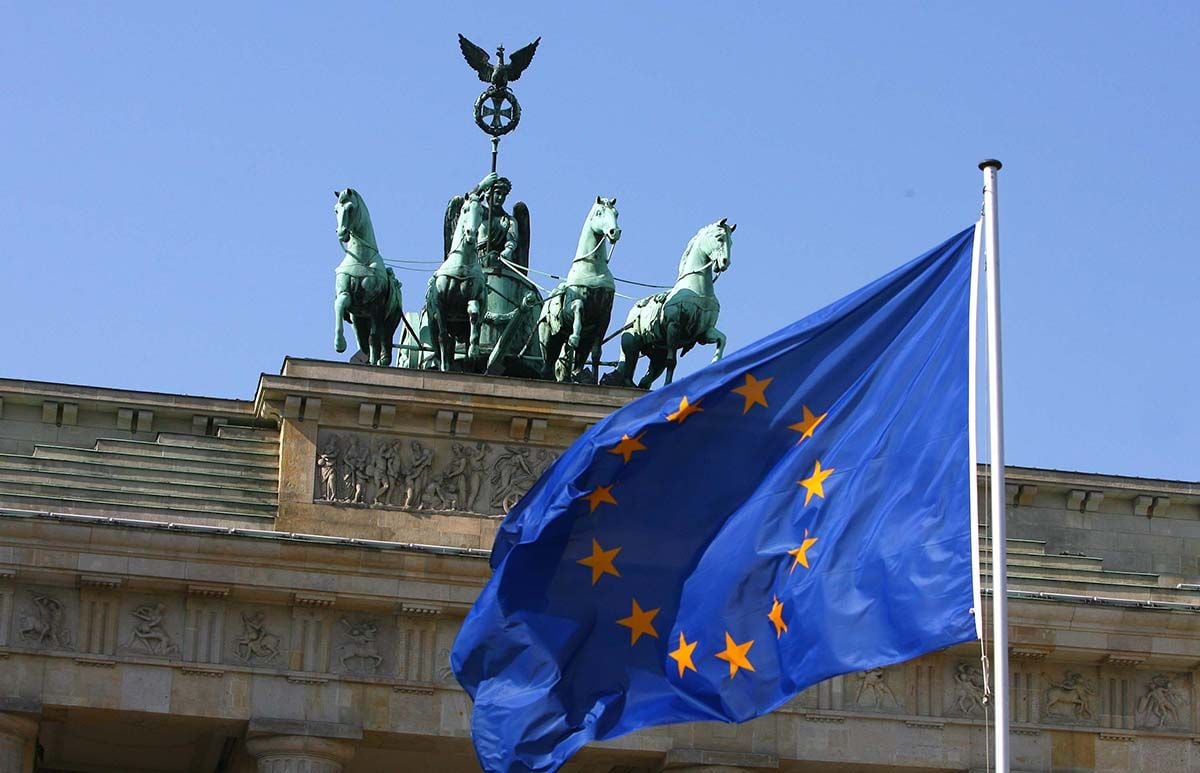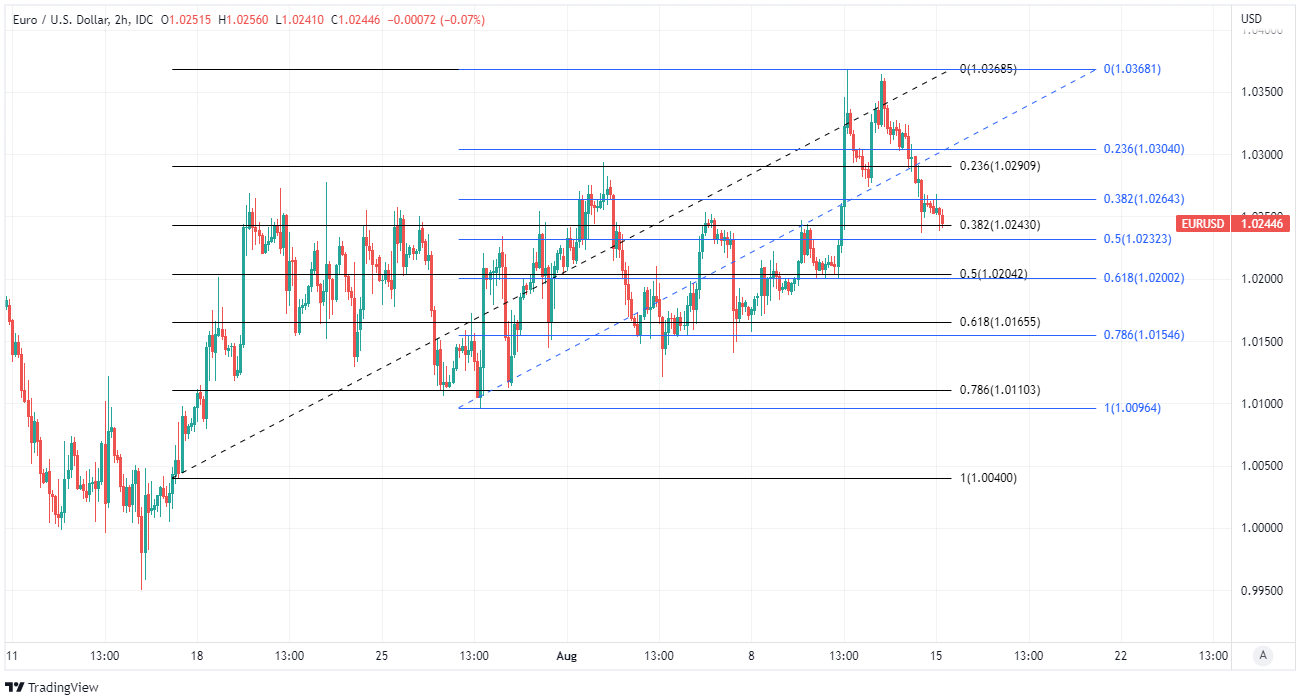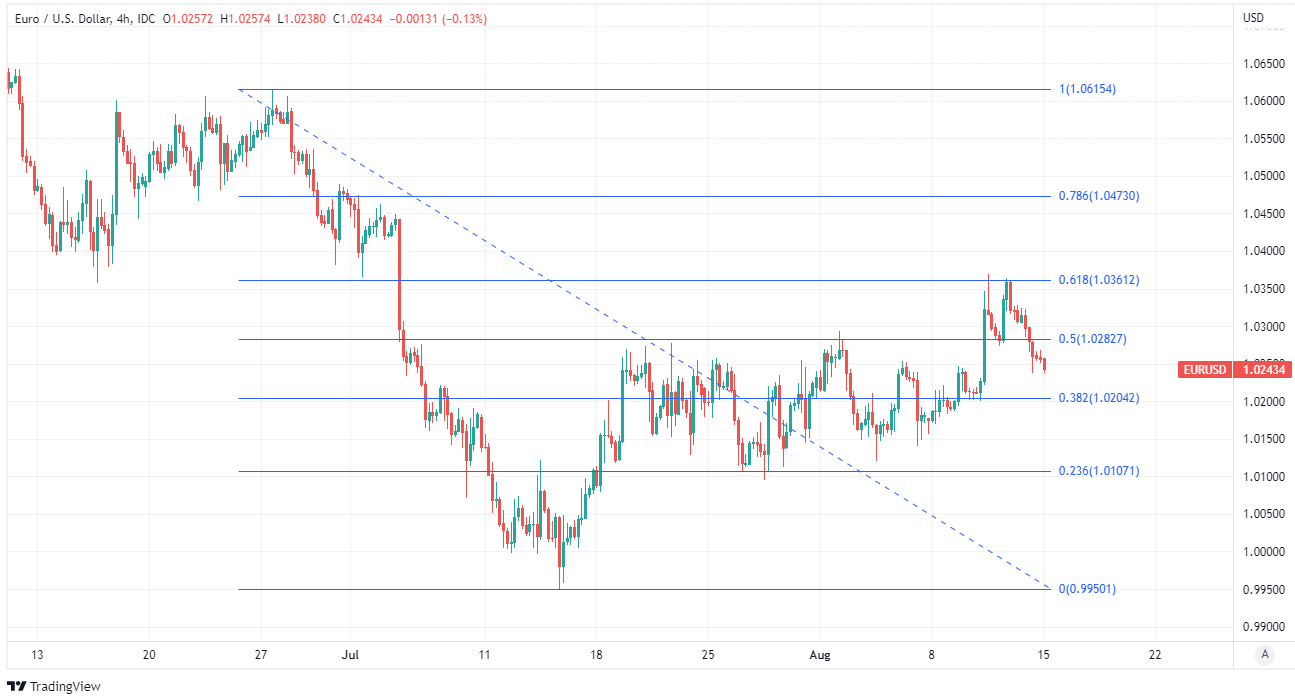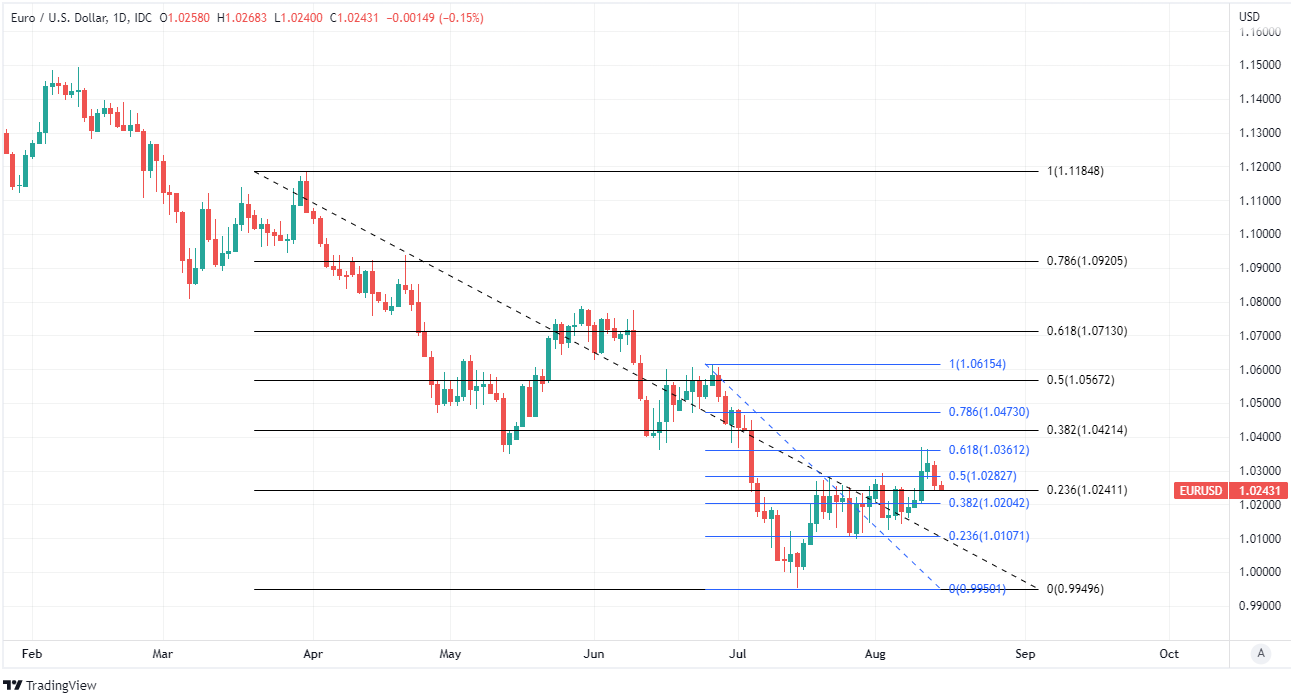EUR/USD Week Ahead Forecast: Supported by Inflation Moderation
- Written by: James Skinner
- EUR/USD supported near 1.0232, 1.0204 & 1.0200
- Struggles for momentum near resistance at 1.0360
- U.S. inflation moderation & PBoC policy supportive
- Europe job figures & busy U.S. data docket in focus

Image © Alfred Yaghobzadeh, European Commission Audiovisual Services
The Euro to Dollar exchange rate reached six-week highs during recent trade and although its recovery was stymied by resistance on the charts, the single currency could remain supported in the days ahead by a stalled U.S. Dollar and more accommodative Chinese monetary policy.
Europe’s single currency rallied its highest level since the opening days of July last week after a raft of figures from the Bureau of Labor Statistics suggested that great moderation of U.S. inflation pressures may have begun working its way through the pipeline last month.
The recovery lost steam around 1.0361, which coincides closely with a 55-day moving average and the 61.8% Fibonacci retracement of June’s decline from levels above 1.06, although the Euro still kept hold of much of its weekly gain.
“We look for EURUSD to fund support in the upper 1.02s in the near-term. Growth/recession/ energy supply concerns remain a threat to the EUR outlook,” says Shaun Osborne, chief FX strategist at Scotiabank.
 Above: Euro to Dollar rate shown at 2-hour intervals with Fibonacci retracements of two important July rallies indicating possible areas of technical support for the Euro. Click image for closer inspection.
Above: Euro to Dollar rate shown at 2-hour intervals with Fibonacci retracements of two important July rallies indicating possible areas of technical support for the Euro. Click image for closer inspection.
The Euro could benefit this week from Monday’s surprise People’s Bank of China (PBoC) decision to reduce interest rates if the PBoC allows the managed-floating Renminbi to depreciate in order to support the local economy.
“The PBoC unexpectedly cut the one‑year Medium‑term Lending Facility (MLF) rate by 10bp to 2.75%,” says Carol Kong, a currency strategist at Commonwealth Bank of Australia.
“The announcements came amid much weaker than expected credit growth and activity data in July,” Kong and colleagues said on Monday after warning that risks for the Euro-Dollar rate are likely tilted to the downside.
Renminbi declines do sometimes have the effect of pulling other currencies lower alongside it and whenever that happens it can prevent the slower and ‘lower beta’ Chinese currency from depreciating in overall or trade-weighted terms, necessitating intervention wherever the latter is actually the goal.
Much depends on if the PBoC does want the currency to depreciate but in that kind of scenario the Euro could benefit because it accounts for one fifth of the trade-weighted Renminbi, making it a prime candidate for a supportive bid from the world’s largest manager of currency reserves.
 Above: Euro to Dollar rate shown at 4-hour intervals with Fibonacci retracements of June declines indicating possible areas of short-term technical resistance for the Euro. Click image for closer inspection.
Above: Euro to Dollar rate shown at 4-hour intervals with Fibonacci retracements of June declines indicating possible areas of short-term technical resistance for the Euro. Click image for closer inspection.
“We were taken particularly by surprise at the weakness of retail sales, where we had thought China should eke out one more month of modest monthly growth given the support for some big ticket purchases,” says Craig Botham, chief China+ economist at Pantheon Macroeconomics.
“A renewed surge of Covid cases and tightening of zero-Covid restrictions likely played a part, but we think weak underlying demand is the main problem,” Botham wrote in a Monday response to the interest rate cut.
With Renminbi matters aside, much about the outlook is again hinged on a Dollar that is likely to be highly sensitive to the outcomes and implications of plentiful economic data due for release from the U.S. over the coming days.
“Although July's abrupt slowing in inflation may well trigger a discussion about whether to move to a more incremental pace of hikes, the latest Fedspeak suggests that it is still much too early to expect a meaningful shift in rate policy,” says Pooja Sriram, an economist at Barclays.
“Consequently, we retain our existing rate call, which foresees that the Fed will hike the funds rate 50bp in September (in line with current market pricing), before stepping down to 25bp hikes in November and December,” Sriram and colleagues wrote in a Friday briefing.
 Above: Euro to Dollar rate shown at daily intervals with Fibonacci retracements of April and June declines indicating possible areas of short-term technical resistance for the Euro. Click image for closer inspection.
Above: Euro to Dollar rate shown at daily intervals with Fibonacci retracements of April and June declines indicating possible areas of short-term technical resistance for the Euro. Click image for closer inspection.
Wednesday’s release of U.S. retail sales and minutes from the July Fed meeting are the highlights of the week ahead for the Dollar and although they may be unlikely to have much impact on the outlook for U.S. interest rate policy, they could influence expectations of the economy.
To the extent that these support the notion of an economy in rude health, they may also be likely to support the Euro and other risky currencies; especially in light of recent signs that U.S. inflation may be moderating.
However, and along the way the market is also likely to pay close attention to Euro Area employment figures for the month of July, which are also out on Wednesday and will impact perceptions of the outlook for Europe’s economies and European Central Bank (ECB) monetary policy.
“We are sceptical of the scope to move further to the upside in circumstances of still high levels of uncertainty over the near-term outlook for growth in Europe due to the declining supply of natural gas. For the US dollar generally, the sell-off this week in our view will not be sustained,” says Derek Halpenny, head of research, global markets and international securities at MUFG.
“It is much too early for the Fed to pivot and comments from Fed officials since the CPI data suggests a determined Fed that want to tighten a lot further before signalling to the market any sense of a change in stance,” Halpenny and colleagues said after suggesting on Friday that clients of the firm consider betting against the Euro-Dollar rate.




